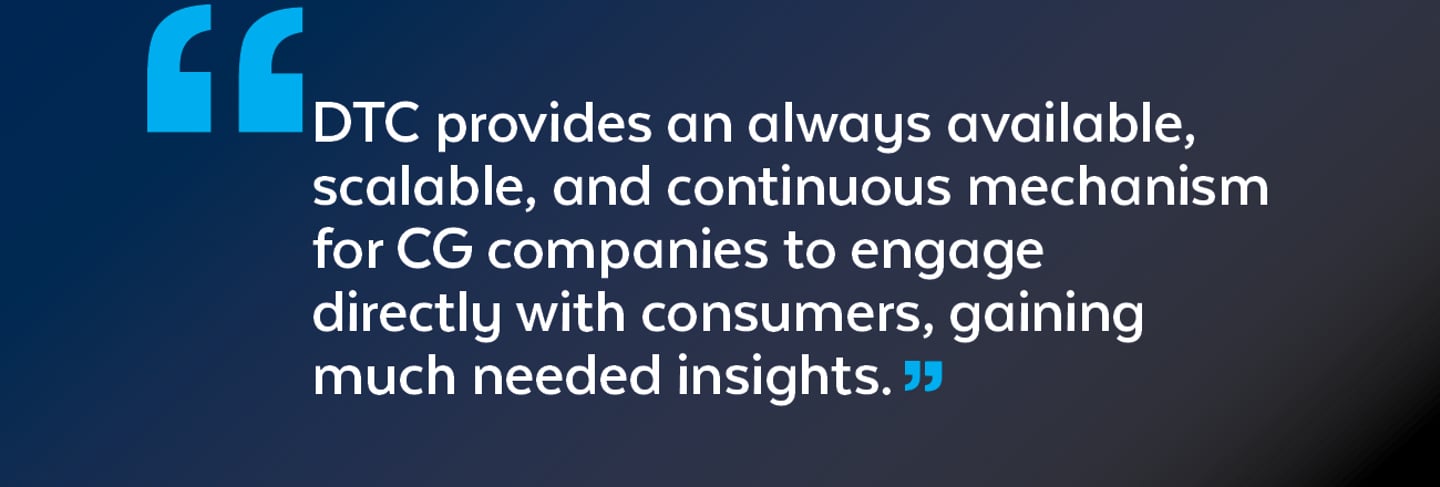Direct-To-Consumer is Not Just a Sales Channel
Whether you’re a digital native, are in the process of making the pivot, or have always had a combination of traditional brick-and-mortar sales with selling direct, finding the right mix of channels for consumer goods companies has always been a balancing act. While each path to success may look different, there’s a consensus that the data and insights gained from selling direct-to-consumer is well worth the effort.
That is why this month, we are tapping into the expertise of David McCarty, CPG industry solutions lead for Treasure Data, to talk about more of the business benefits of DTC including a client example from AB InBev. McCarty also debunks the common myths that can hinder success in this exclusive Q&A.
CGT: What are the business benefits in selling directly to consumers?
McCarty: The knee jerk answer would be an additional sales channel. But the reality is that the benefits go beyond incremental revenue — DTC is not just a sales channel; it’s also an engagement channel providing a valuable data exchange. For a CG company, this source of 1st party data can be a gold mine; PublicisSapient estimates that the value of this data in driving improvements in brand communication, brand engagement and product innovation is 1.4 to 1.7 times greater than the revenue generated. DTC provides an always available, scalable, and continuous mechanism for CG companies to engage directly with consumers, gaining much needed insights.
CGT: What are some common myths about DTC that you hear in working with your CG clients and how would you debunk those?
McCarty: I believe that the most common myth is that DTC can just be a duplication of existing commerce channels. But the reality is that if a CG company expects a consumer to come to their site versus a traditional retailer or eMarketplace, there has to be additional value for the consumer. This could be unique product selections, special bundle packs or compelling price offerings.
The second myth is that it is an arduous process to stand up DTC capabilities from a technology standpoint. This myth seems to be fading however given the rapid transformation many CGs executed. Probably the most famous is PepsiCo’s launch of 2 DTC sites in 30 days. But many CG companies, large and small, executed a DTC strategy during 2020, there really is no longer a reason not to get into the DTC game.
CGT: What technologies or tools are necessary to execute a DTC strategy?
McCarty: We think there are three critical technology components for DTC success: a customer data platform (CDP), a logistics platform, and an ecommerce platform. Many CG companies focus on the ecommerce and logistics platform, which is logical as they need a mechanism for the consumer to shop and for the company to fulfill the purchases. But without a CDP, CGs miss the opportunity to unify, enrich and analyze the first party data that can be collected. As we discussed earlier, the value of this data to drive brand loyalty and engagement activities can be greater than the revenue generated from the DTC channel.
CGT: Do you have any client examples of organizations that have pivoted to DTC successfully?
McCarty: While it is very early in the overall CG DTC journey, we do have an interesting example. ABInBev was utilizing Treasure Data’s CDP prior to the COVID-19 pandemic to unify their consumer information. When COVID-19 hit Central and South America, accessibility to stores was limited and completely changed the buyer journey. ABInBev was able to quickly pull together apps and open up new DTC channels to show consumers where and how to buy their favorite beverages. The company attributes its ability to directly reach its consumers in such an agile and rapid fashion to its Treasure Data CDP.







